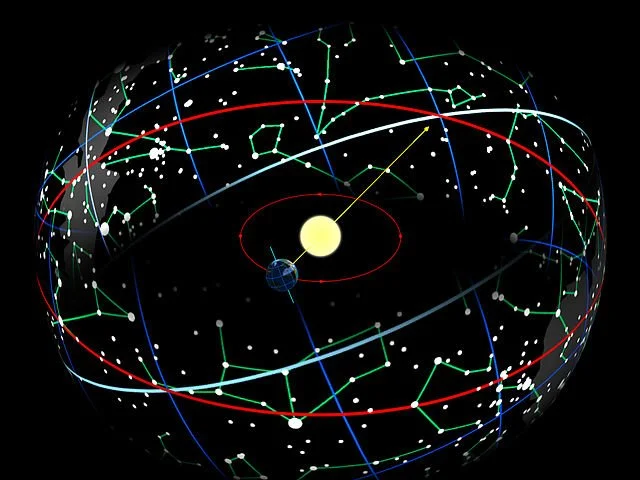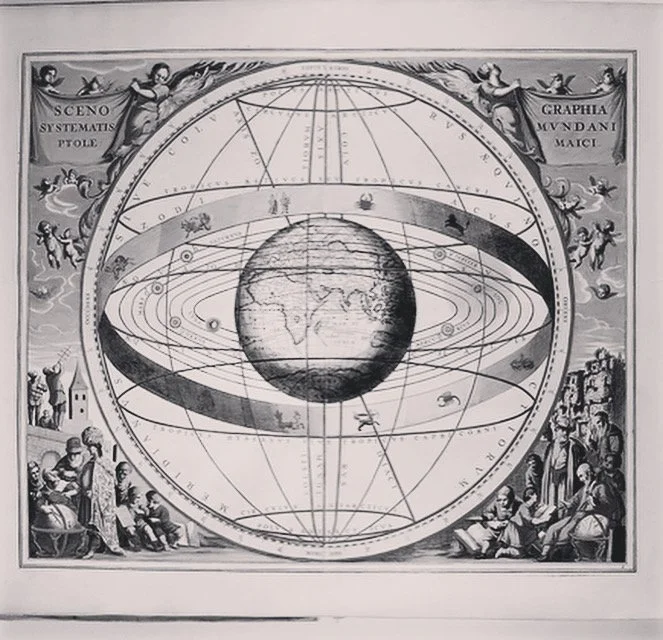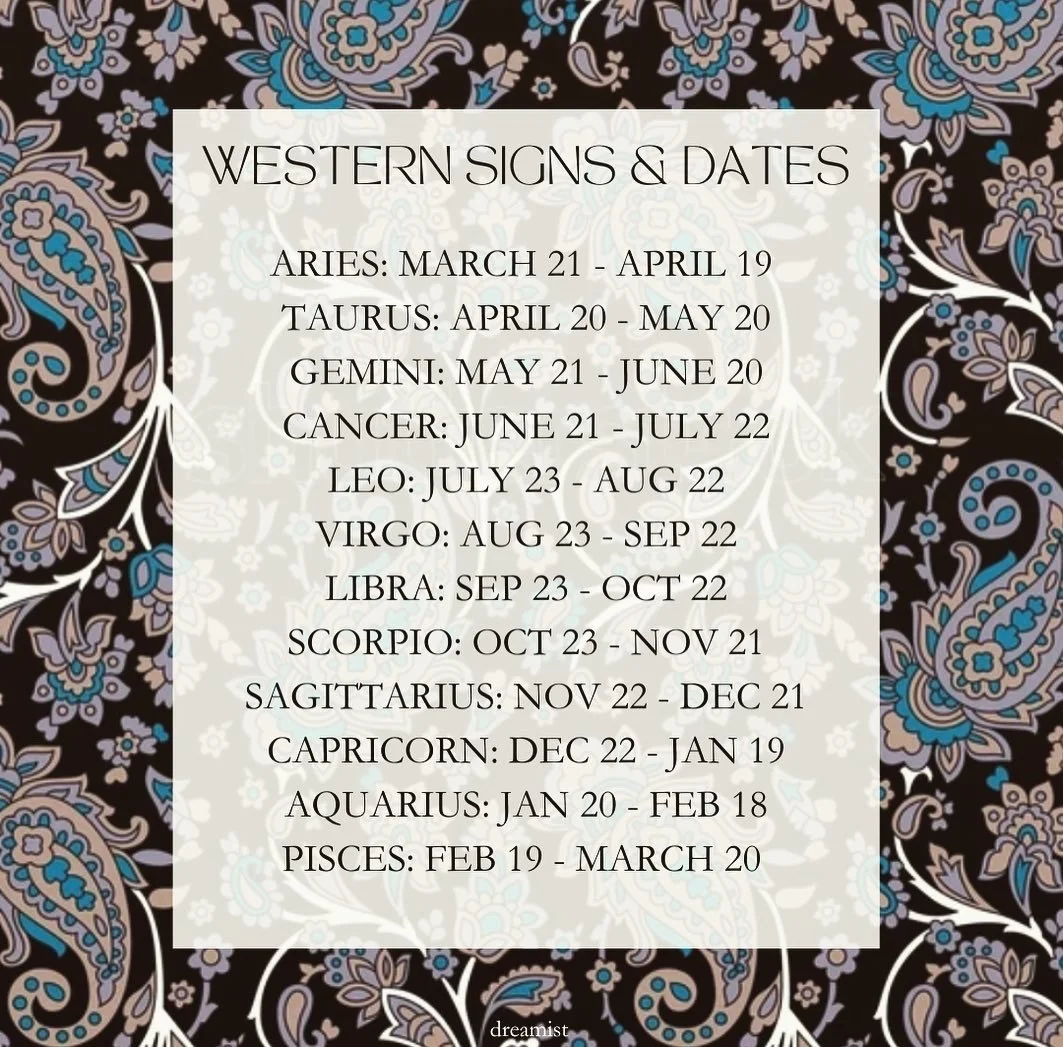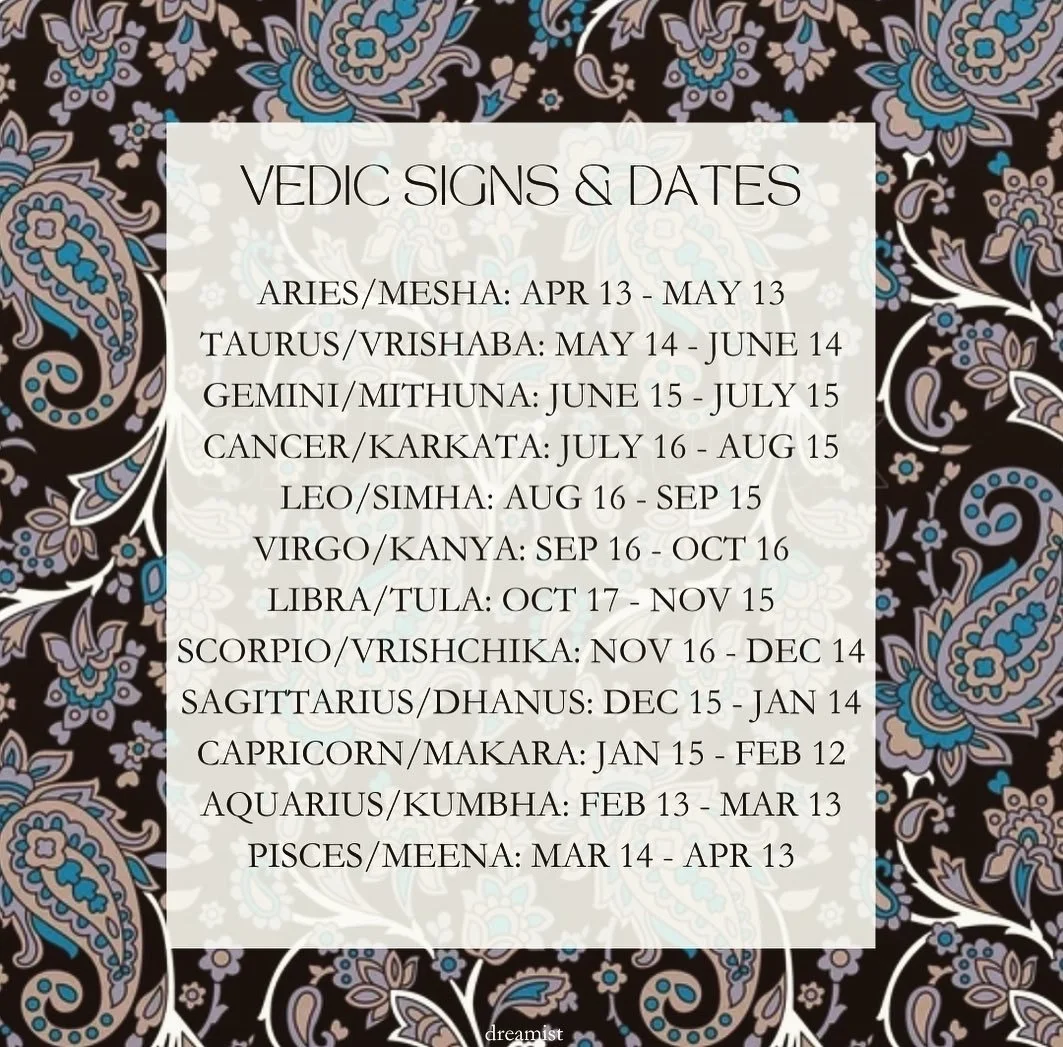Tropical vs Sidereal Astrology
Have you ever noticed that your sign is different in Vedic astrology than in Western astrology? Why is that?
It’s because Western and Vedic astrologers use different systems to divide the Ecliptic into 12 signs. The Ecliptic is the path the Sun and planets appear to transit through the sky from our standpoint on Earth. The 12 constellations on that path are called the Zodiac.
The constellations and the Ecliptic (red line). Image via Tau’olunga/Wikimedia Commons
Western Astrologers use the Tropical Zodiac, which is based on the Equinoxes and Solstices, which align with the four seasons. The Vernal Equinox (Spring Equinox in the Northern Hemisphere, Fall Equinox in the Southern Hemisphere) coincides with, ostensibly, the transit of the Sun into the first constellation of the Zodiac, Aries.
Vedic Astrologers use the Sidereal Zodiac, which is based on the actual observable positions of the constellations in the Ecliptic. Today, in the middle of what Western astrologers call Aries season, the Sun would not actually be in the constellation of Aries; it would be in the constellation of Pisces. So, in Vedic Astrology, it would be Pisces season.
Why are they different? At the onset of Western Astrology - about 2000 years ago – both Western and Vedic Astrologers would observe the Sun (and planets) transiting the same constellation as each other. The two systems – Tropical and Sidereal – were aligned. But over time, they began to fall out of alignment due to Precession.
Precession is the gradual movement of the stars and constellations. Because the Earth spins on an axis, the stars and constellations don’t stay in a fixed position; they are forever moving. Each star moves roughly one degree every 72 years. Vedic Astrology takes this fact into account and adjusts its calculations accordingly. Western Astrology does not. Which means that today, 2000 years later, the once-aligned Tropical and Sidereal zodiacs differ by almost 24 degrees.
In Western Astrology, the Equinoxes and Solstices determine the astrological season. Year after year, the Vernal Equinox coincides with the start of Aries season. The June Solstice coincides with the start of Cancer season. And so on. In Western astrology, many of the qualities attributed to the signs are based on the seasons. For example, because Aries coincides with the start of Spring when winter has faded and plants are blooming, Aries came to represent renewed energy, beginnings and the ability to facilitate change. Western astrologers would argue that if they were to adjust their calculations to where the constellation is now, the same qualities would not apply to the sign of Pisces.
You may be thinking, how does Tropical Astrology work in the Southern Hemisphere? The Vernal Equinox does not coincide with Spring in the Southern Hemisphere; it coincides with Fall. Which would mean that Aries season begins in the Fall in the Southern Hemisphere, hardly a time of year known for new beginnings.
One explanation for this amongst some Western astrologers has to do with the speed of the Sun. The Sun appears to move at different speeds along the Ecliptic throughout the year. Regardless of Hemisphere, regardless of season, the Aries Equinox in March is the start of the Sun moving from fast to slow and the Libra Equinox in September is the start of the Sun moving from slow to fast. The explanation is that ancient Tropical astrologers were aware of this and that some of the qualities of the signs may have actually come from this observation.
For example, the Sun’s slowest speed is in July and August and its fastest is in February. This may be why Leo is said to be ruled by the Sun itself and is assigned to the months of July and August, the period of the year when the Sun lingers longest. And why Aquarius - Leo’s opposite sign and therefore a sign with opposite qualities to the Sun-ruled Leo - is assigned to the period of the year when the Sun does not linger. These attributions would make sense in both the Northern and Southern Hemispheres, as the speed of the Sun would follow this pattern in both hemispheres, regardless of season.
So which is the more accurate system? Well, it’s important to note that both systems are idealized. The actual constellational zodiac is uneven, with some very large constellations and some very small. There are also some constellations that only partially intersect the Ecliptic, like Ophiuchus. Both Tropical and Sidereal systems have taken those uneven zodiacal constellations and divided them into twelve 30° sections, and neither system includes Ophiuchus as a sign. So in all fairness, it’s more accurate to say that neither system is 100% accurate.
That being said, I believe there is wisdom in both systems. Astrology is a tool to help us better understand ourselves. There are different systems, different techniques, different interpretations across different astrologers. Ultimately, it’s all about finding what resonates for you.




